Using updated stellar measurements based on new data from the Gaia mission, three (and possibly four) Kepler exoplanets are actually small stars, but it’s unlikely new calculations will reveal many more such issues. Plus, Ingenuity, astronauts, permafrost, and This Week in Rocket History, we look back at STS-3 and the first use of the Canadarm.
Podcast
Show Notes
Ingenuity gets to fly on longer
- NASA JPL press release
Astra deploys customer payloads into orbit
- PDF: LV009 press kit (Astra)
NASA Astronauts Complete EVA for ISS solar panels
NASA confident Mark Vande Hei to return on Soyuz
It will come from the ice
- NASA JPL press release
- “Permafrost carbon emissions in a changing Arctic,” Kimberley R. Miner et al., 2022 January 11, Nature Reviews Earth & Environment
Color catalog of icy microbial life created
- Cornell University press release
- “Color Catalogue of Life in Ice: Surface Biosignatures on Icy Worlds,” Lígia F. Coelho et al., 2022 March 10, Astrobiology
Kepler planets turn out to be small stars
- MIT press release
- “Revisiting Kepler Transiting Systems: Unvetting Planets and Constraining Relationships among Harmonics in Phase Curves,” Prajwal Niraula, Avi Shporer, Ian Wong, and Julien de Wit, 2022 March 15, The Astronomical Journal
This Week in Rocket History: STS-3
- STS-3 (NASA)
- PDF: Jack Lousma biographical info (NASA)
- Jack R. Lousma interview (NASA)
- C. Gordon Fullerton biography (NASA)
Transcript
I am your host Dr. Pamela Gay.
I am your host Erik Madaus.
And we’re here to put science in your brain.
Today is a wild day of rockets, astronauts, and even an update on the little Mars helicopter, Ingenuity.
There is also lots of Earth science and an update on the count of exoplanets (in the wrong direction).
Plus, pretty colors from microbes could be a sign of life on other planets and how a train contributed to a space shuttle mission.
All of this now, right here on the Daily Space.
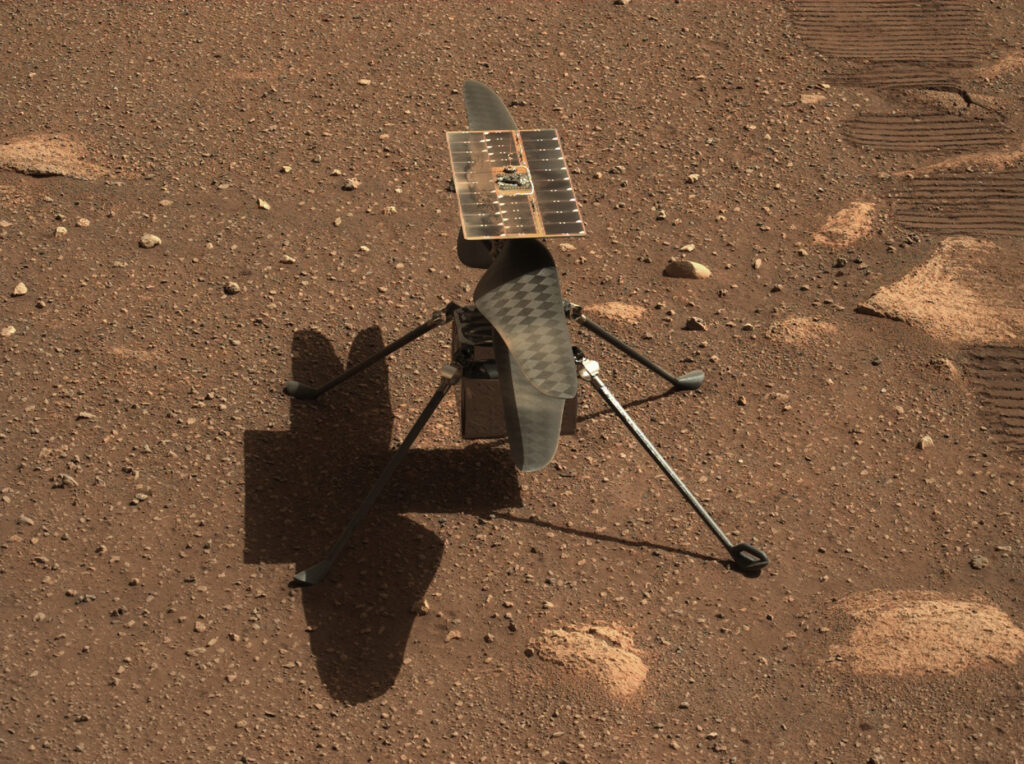
Today, we get to start our show with a bit of happy good news. NASA is extending the mission for the little Ingenuity helicopter on Mars for one more year.
Ingenuity flew to Mars in the belly of the Perseverance rover and arrived on the red planet in February 2021. It was then released in April and since then, has demonstrated that tiny helicopters can work on Mars.
Originally, NASA planned to fly Ingenuity for just five test flights over thirty days while the commissioning of the rover took place. Twenty-one flights and more than one year later, the helicopter is still healthy. Ingenuity is being used to explore landscapes that aren’t accessible to the rover and to scout ahead to find travel paths and good rocks to sample.
In a release from NASA, associate administrator Thomas Zurbuchen states: Less than a year ago we didn’t even know if powered, controlled flight of an aircraft at Mars was possible. Now, we are looking forward to Ingenuity’s involvement in Perseverance’s second science campaign. Such a transformation of mindset in such a short period is simply amazing, and one of the most historic in the annals of air and space exploration.
Next up on Ingenuity’s mission plan is a scouting mission to determine which of two dry river channels Perseverance should travel up as it explores the ancient river delta that once flowed into Jezero crater.
On March 15 at 16:22 UTC, an Astra Rocket 3.3 launched the Spaceflight Astra-1 mission into Sun-synchronous orbit from the Pacific Spaceport Complex in Kodiak Alaska. Onboard were two payloads: one technology demonstrator for a hosted payload satellite that remained attached to the second stage of the rocket and a 1-unit CubeSat from the Portland Aerospace Society in Oregon.
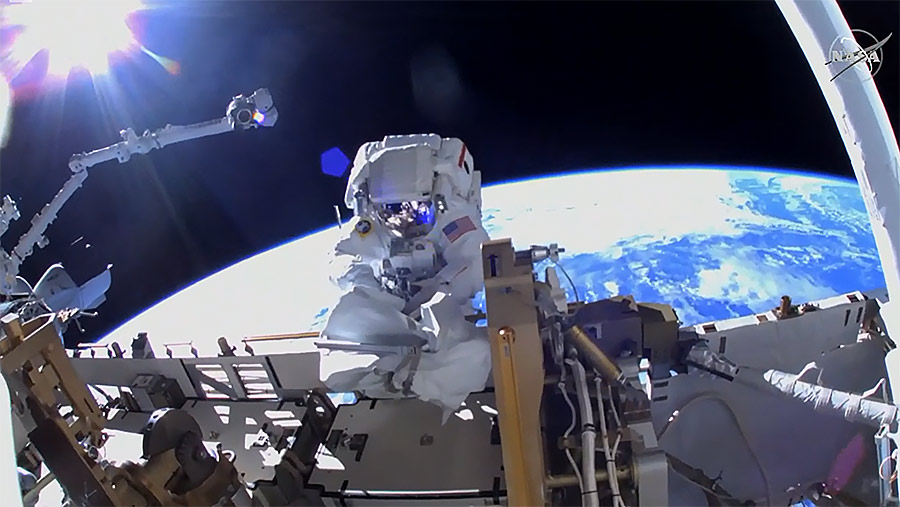
This mission, called LV009 by Astra, represented their first customer payloads successfully deployed into orbit. Their first successful orbital launch last year carried a mass simulator, and their first customer orbital launch last month failed because of a fairing separation error.
This mission was launched from Kodiak because of the orbit required. Rocket 3.3 can launch from many launch pads around the world because it and its launch pad are designed to fit inside standard intermodal containers. So far they have launched mainly from Kodiak, Alaska, because of its remote location and access to high inclination orbits. They started launching from Florida last month because of that mission’s inclination orbit and will continue to launch from Florida for NASA’s TROPICS mission soon on their manifest.
Also on March 15, NASA astronauts Raja Chari and Kayla Barron conducted a nearly seven-hour spacewalk on the International Space Station (ISS) to build and install an adapter bracket for the station’s new iROSA solar panels to be added on top of the station’s current solar panels. It allows them to use the same motors and power management system as the current panels, the oldest of which are pushing over a decade in space.
Kayla was designated EV-1 and wore the spacesuit with red stripes and Raja was EV-2, wearing the plain spacesuit. This was her second spacewalk and his first. The two completed the adapter installation early and completed additional “get ahead” tasks, including loosening several bolts on equipment they will use on a spacewalk next week and inspecting the area around the Alpha Magnetic Spectrometer. This spacewalk, number US EV-79, marked 1,555 hours across 247 spacewalks on the ISS.
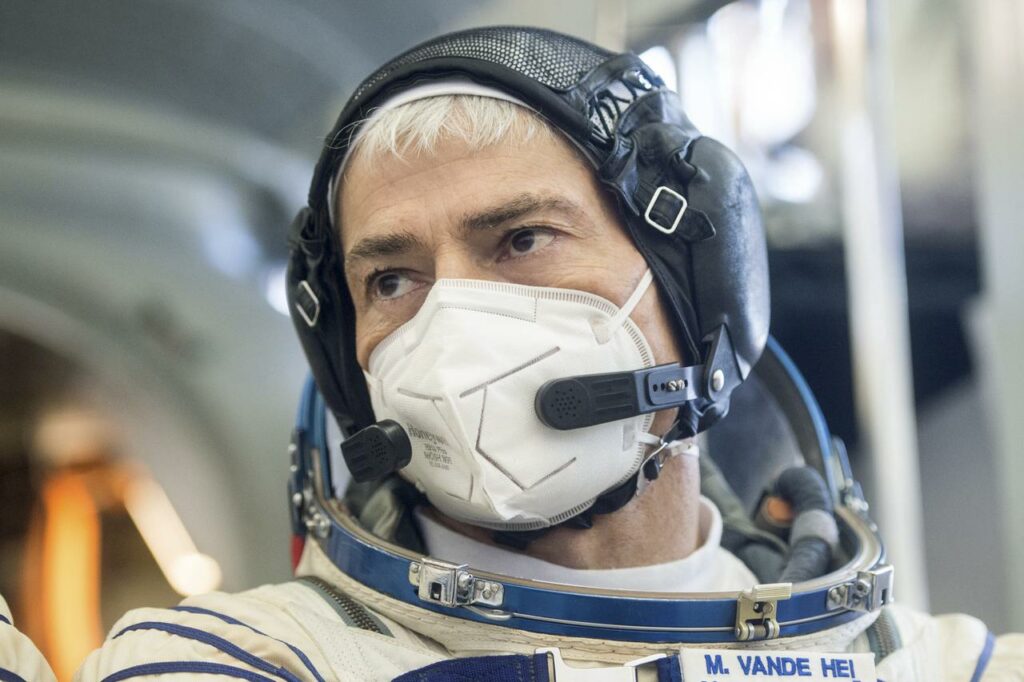
While we’re on the topic of the ISS, I want to take a moment to address a question we’ve been getting from viewers.
For the past many years, NASA astronauts have been flying up to the ISS as part of the crew of Russian-built and launched Soyuz capsules. The current logistics have astronauts returning to Earth on the spacecraft type they arrived in. Since the Dragon Crew capsule and Soyuz require astronauts to wear very different kinds of space suits, this just makes things easier.
Mark Vande Hei arrived on the ISS as part of Expedition 64 in April 2021 and has been part of the Expedition 64/65/66 crews. He and colleague Pyotr Dubrov have had their flight extended, and Vande Hei surpassed Scott Kelly on March 15, 2022, as the U.S. astronaut who has flown the most consecutive days. Vande Hei and Dubrov are slated to return to Earth along with Anton Shkaplerov on Soyuz on March 30, 2022. Recent tweets coming from Russian officials have led to concerns that Vande Hei wouldn’t be allowed to fly on Soyuz, but in multiple statements, NASA has worked to assure people that yes, Vande Hei will return on Soyuz.
Soyuz lands in the steppes of Kazakhstan, which has been an independent republic since 1991.
Should something go wrong, he can be brought back on a Dragon capsule if he is brought a spacesuit.
Bottom line, to all of you asking: Vande Hei is coming back. It’s going to be fine. And, as always, there is at least a plan B, and we feel there are likely additional plans we just don’t know about.
Space is hard. You know what though? Understanding earth is hard too, but we have some new news on our planet and actually other worlds, too.
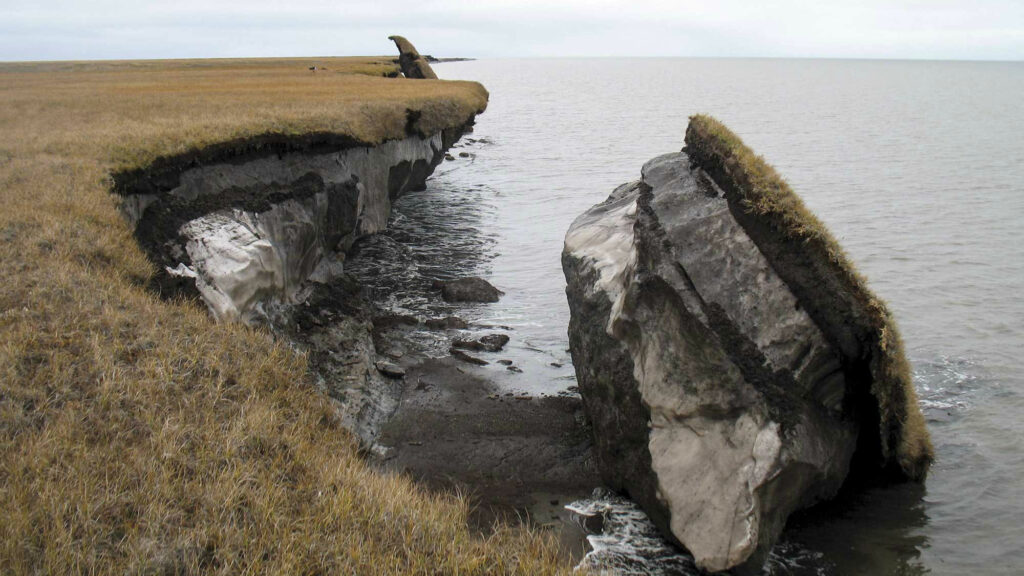
One of the problems with understanding our planet is we don’t always like what we learn. For instance, the Arctic permafrost contains 1,700 billion metric tons of frozen and thawing carbon. And what remains frozen today is likely to start melting in a not-too-distant tomorrow.
Permafrost is defined as any soil that has been frozen for two or more years, with emphasis on the “or more”. In some cases, melting permafrost has revealed amazingly well-preserved mammoths, cave lions, and other now-extinct animals plus frozen seeds, microbes, and more. These frozen samples of the past offer scientists the thrilling possibility of one day resurrecting these species with genetic engineering, and some researchers have already started growing seeds from these samples of the past. Unfortunately, alongside this cool sci-fi future is the possibility of both death and destruction coming from the ice.
A new paper appearing in the journal Nature and led by Kimberly Miner looks at the emissions of melting permafrost and makes some key points we need to know. First off, this permafrost contains viruses, microbes, and other things, including people who were buried with smallpox and the plague. This is worrying. But it isn’t considered the worst we need to worry about.
The permafrost also contains trapped gasses – including greenhouse gases – and chemicals, like the banned pesticide DDT, and just as we are finally seeing animal populations return to healthy-ish levels, we need to worry.
And yet, it somehow still gets worse.
When the permafrost froze, it locked away plant and animal matter that is made of carbon molecules that will begin to decompose when thawed. According to Miner: Current models predict that we’ll see a pulse of carbon released from the permafrost to the atmosphere within the next hundred years, potentially sooner.
According to the NASA release on this work: ...changes in the Arctic and Antarctic will cascade to lower latitudes. Earth’s polar regions help stabilize the planet’s climate. They help drive the transfer of heat from the equator toward higher latitudes, resulting in atmospheric circulation that powers the jet stream and other currents. A warmer, permafrost-free Arctic could have untold consequences for Earth’s weather and climate.
And this is what we have to worry about. Ice is nice folks. We want ice.
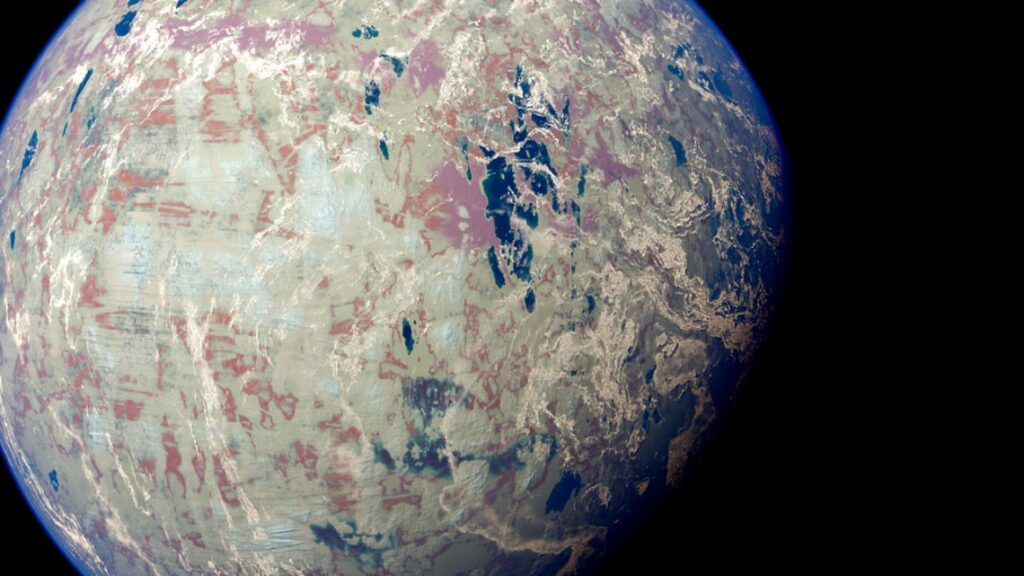
Ice is good for a lot of reasons beyond just the permafrost here on Earth. Ice actually hosts a lot more life than one would expect, especially in microbial form. And now researchers have published a color catalog of those microbes and how they would appear from space in the journal Astrobiology, all to help with the search for life beyond Earth.
Lead author Lígia F. Coelho, soon to be a postdoc at Cornell University, collected samples of eighty different microorganisms in the frozen region of the Hudson Bay in Quebec. The samples came from ice cores as well as holes drilled in the ice to sample the water, and Coelho grew them in a lab for further analysis. She took measurements of the microbes to understand how they could collectively look through a telescope.
Coelho explains: On Earth, vibrant, biological colors in the Arctic represent signatures of life in small, frozen niches. The colors from organisms could dominate the whole surface of icy worlds. Frozen exoplanets are not lost causes. With upcoming telescopes, you could find the telltale signs of microbes – if you know what to look for. That’s why we’ve created this catalog.
It’s very likely that the first life found beyond Earth will be microbial, as microbes tend to exist in the wildest conditions and are more likely to be adapted to harsher environments such as space radiation. This new catalog is an excellent first step to being able to identify potential life in the future.
That doesn’t mean we will get the discovery right on the first try. Or even the second. Science is hard, folks.
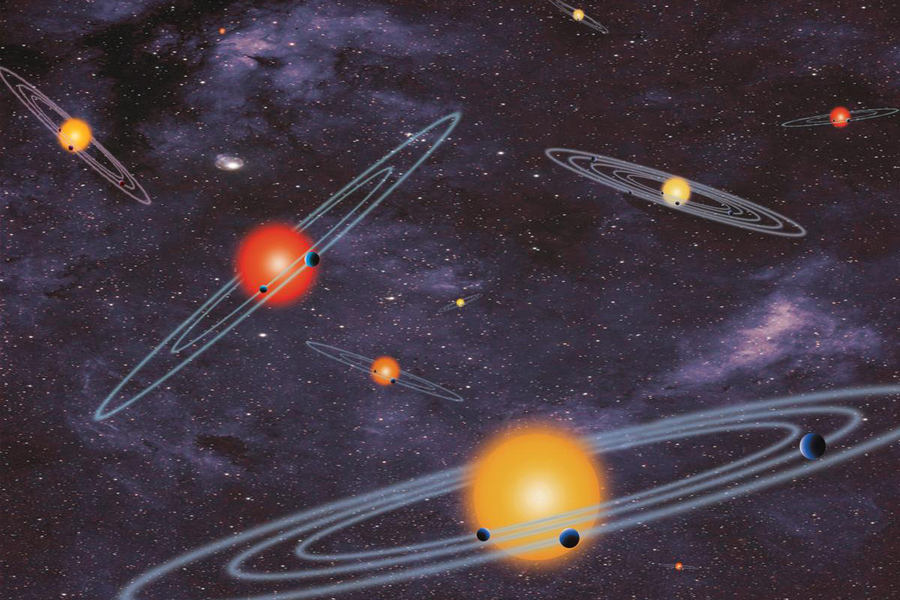
Speaking of getting it wrong, a new study published in The Astronomical Journal reports that three and maybe even four objects originally classified as exoplanets in Kepler data are actually small stars. Oops.
The research team behind this paper used updated measurement techniques and discovered that Kepler-854b, Kepler-840b, and Kepler-699b are about two to four times the size of Jupiter. This makes them too big to be planets, at least so far as we have been able to confirm when it comes to exoplanets. First author and graduate student Prajwal Niraula explains: Most exoplanets are Jupiter-sized or much smaller. Twice [the size of] Jupiter is already suspicious. Larger than that cannot be a planet, which is what we found.
That’s where that possible fourth star-not-planet comes in. Kepler-747b is only about 1.8 times the size of Jupiter, which sets it right on the cusp of being too big to be an exoplanet. However, a more detailed look at the object finds that it is relatively distant from its star, so it doesn’t get enough light to be that big a planet. But there are some other confirmed exoplanets that size, so it’s not completely outside the realm of possibility.
Oddly enough, the work that led to this result wasn’t even about confirming exoplanets. The goal was to find signs of tidal distortion in extrasolar systems. Nirula goes on to explain: If you have two objects close to each other, the gravitational pull of one will cause the other to be egg-shaped, or ellipsoidal, which gives you an idea of how massive the companion is. So you could determine whether it’s a star-star or star-planet system, just based on that tidal pull.
So what led to the new measurements? One of my favorite missions is the European Space Agency’s Gaia observatory, which precisely measures and maps a whole lot of data about stars in our galaxy. With all of these improved measurements and a second look at various light curves from Kepler, the objects causing a dip in certain stars’ light curves turned out to be larger than previously calculated.
And some of them, we now know, are too big to be planets.
But this doesn’t mean that Kepler’s measurements were completely wrong everywhere and all the time. Co-author Avi Shporer notes: This is a tiny correction. It comes from the better understanding of stars, which is only improving all the time. So, the chances of a star’s radius being so incorrect are much smaller. These misclassifications are not going to happen many times more.
Mostly it means that we’ll have to wait a tiny bit longer to break that 5,000 confirmed exoplanet mark. But we’ll get there.
Coming up next, our weekly rocket history segment looks back at STS-3, the space shuttle mission that first used the Canadarm.
This Week in Rocket History
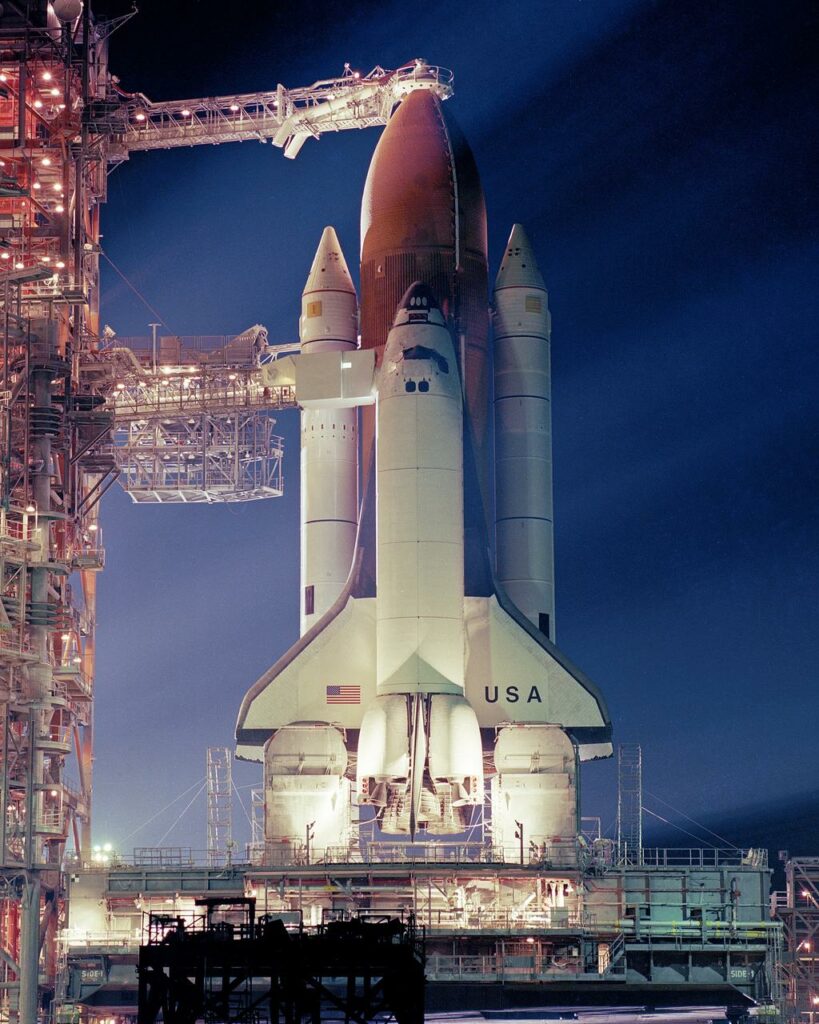
Starting in 1972, the development and construction of the first of NASA’s Space Transport System vehicles, more commonly known as Space Shuttles, was completed in 1979. The next step was a multi-mission test flight program, which controversially would have a human crew on the first flight of the vehicle.
Today, we’re going to look at STS-3, which used OV-102 Columbia, flown by spaceflight veteran Jack Lousma and rookie Gordon Fullerton. Lousma had previously flown on Skylab 3. Fullerton was in the Air Force’s canceled Manned Orbiting Laboratory (MOL) program before being assigned to NASA.
The goals of STS-3 were to use Canadarm, the newly developed remote manipulator system, operationally for the first time, continue evaluation of the shuttle system, and operate payloads in the shuttle’s payload bay and crew compartment. The original goal of STS-3 was to deploy a booster that would dock and raise the orbit of Skylab, except the shuttle’s development was delayed, and Skylab reentered in 1979.
STS-3 launched on March 22, 1982, from launch complex 39A at the Kennedy Space Center in Florida. After an eight-minute ride, Lousma and Fullerton were in orbit just under 300 kilometers above the Earth.
Space is either very cold or very hot depending on where you are and the only way to get rid of heat is by radiating it away so heating and cooling systems are very important for spacecraft. The vehicle experiment on STS-3 included pointing the shuttle at various angles to the sun to get data on its thermal properties. As a result of the testing, the payload bay doors were warped and did not initially close. This would have been a disaster. Fortunately, rolling the shuttle through different positions restored the doors to their normal shape and they were successfully closed.
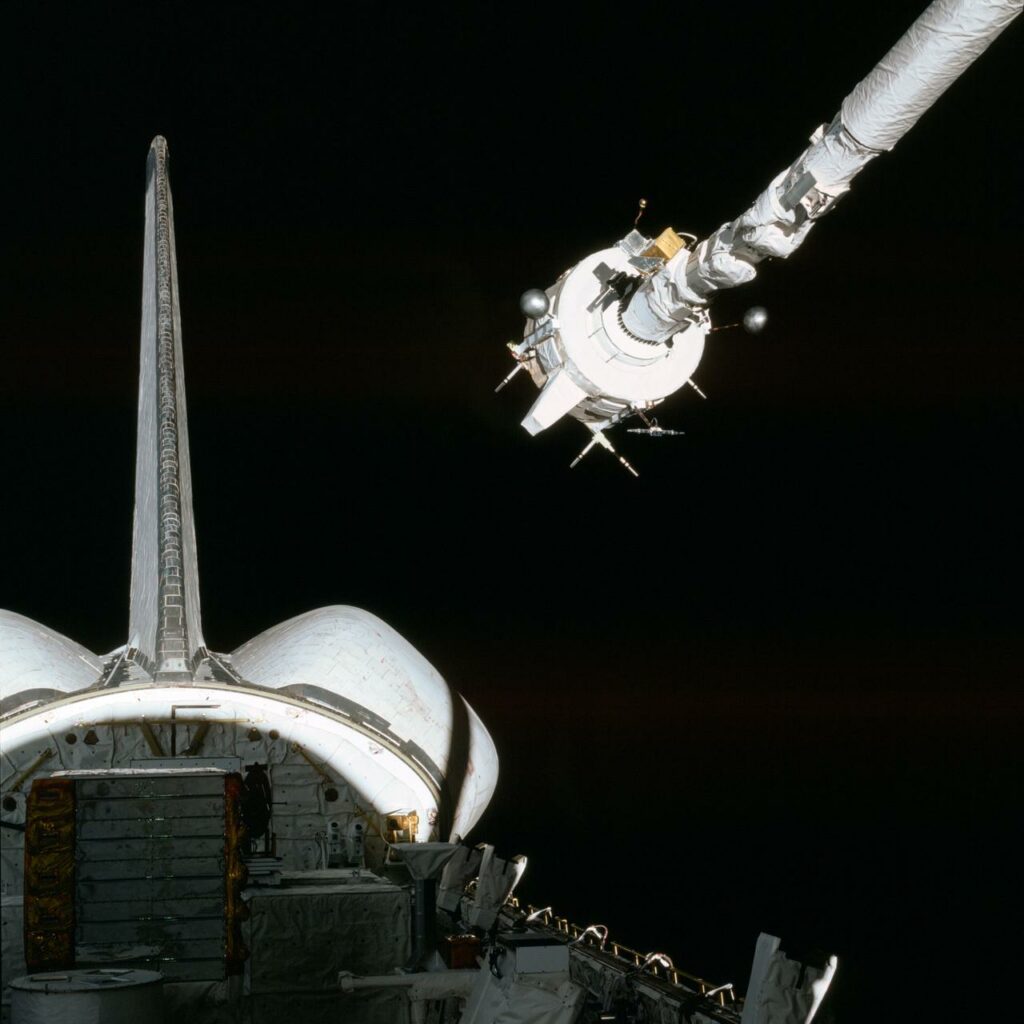
The Remote Manipulator System, “Canadarm”, had been used on STS-2, but without any payloads. On STS-3, Canadarm picked up a payload called the Plasma Diagnostics Package and moved it to three different spots away from the payload bay to collect data on the space environment. The experiment proved that the shuttle itself didn’t interfere much with the space environment, so it would be good for experiments. Fourteen other experiments were conducted during STS-3.
Seven days into the mission it was time to come home. Just before launch, the primary landing site, Rogers Dry Lake on Edwards Air Force Base became… not dry. So NASA hired two trains to ship forty train cars of stuff to the backup landing site at White Sands Missile Range in New Mexico. The crew prepared the shuttle to return, but a windstorm over the landing zone forced them to stay in space for another day. Forced is a strong word because according to Jack Lousma in a 2010 Oral History interview, on the last day of the mission he “finally had a chance to look out the window and enjoy being [in space]”. He called it “our world’s favorite vacation spot”.
Despite the lack of a wind storm, there were still high winds in the area. The shuttle was a glider on reentry, with a glide ratio worse than a brick, so it had to manage its speed and altitude very carefully; it could not go around for a second landing attempt. Instead of taking the previously planned approach, the shuttle had to do an alternative approach because of high winds at 25,000 feet. On this mission, Columbia had few of the modern systems installed for later missions, so it was a lot more manual using the pilot’s skills and experience to get it down safely.
From Mach 25 to Mach 0.95, that is most of the re-entry, the shuttle flew itself. Lousma took over to get the shuttle on its final landing glideslope, then reengaged the autopilot to complete a test objective. Right before the pre-flare maneuver, the autopilot closed the speed brakes early, leading to a higher speed than expected at pre-flare, though still within limits for landing. On touchdown, the nose immediately dropped, and Lousma, surprised, turned off the autopilot, overcorrecting to raise the nose back up. Columbia bounced briefly on touchdown before all three wheels returned to the ground.
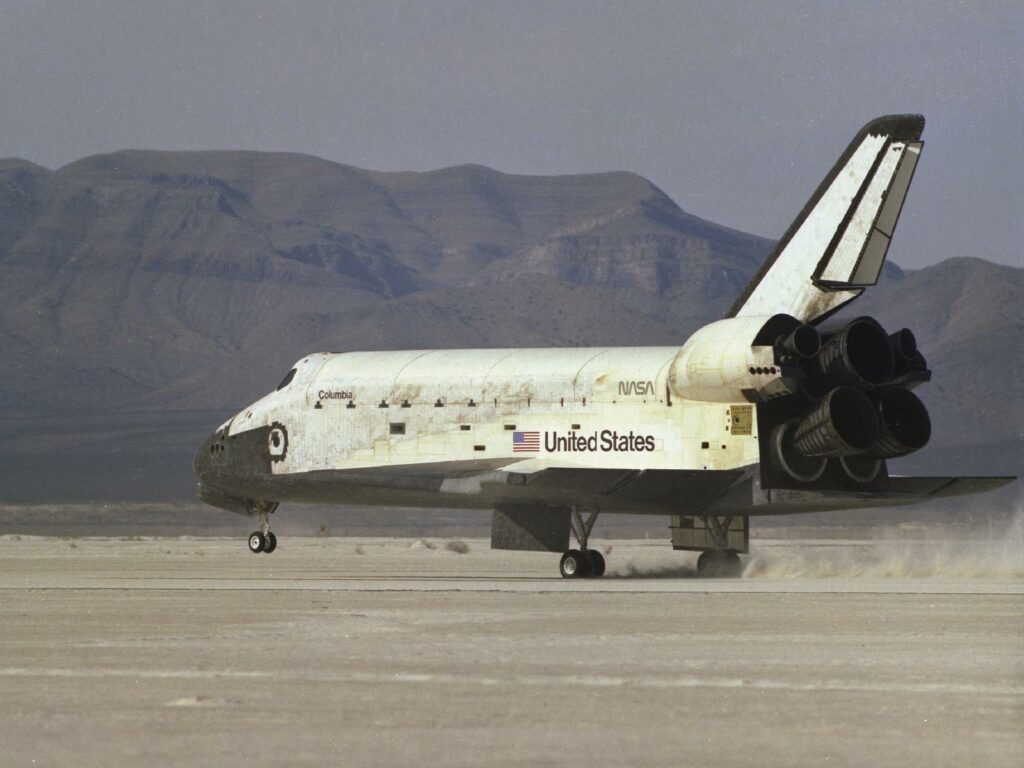
As a result of the problems on STS-3, the landing autopilot was removed and all subsequent shuttle landings were done manually. Also, despite being an experimental rocket-powered government spaceplane, the shuttle still needed some FAA certification, and the FAA vetoed the landing autopilot because there was no backup should it fail really late in the approach. Requiring a pilot to recover from the automatic failure and still make a good landing because they only have one chance to land is “not professionally accepted airmanship”. The root cause of the issue was the astronauts never training on the landing autopilot in the simulator because it wasn’t added.
No other shuttle missions would land at White Sands. Gypsum dust from the landing got stuck very far in the spacecraft, to the point where it floated out in space on future missions and was spotted in the spacecraft for the rest of its career.
Statistics
And now, for some statistics.
The number of toilets in space is still eight, four on the ISS, one on the Soyuz, one on the Crew Dragon, one on Shenzhou 13, and one on Tianhe.
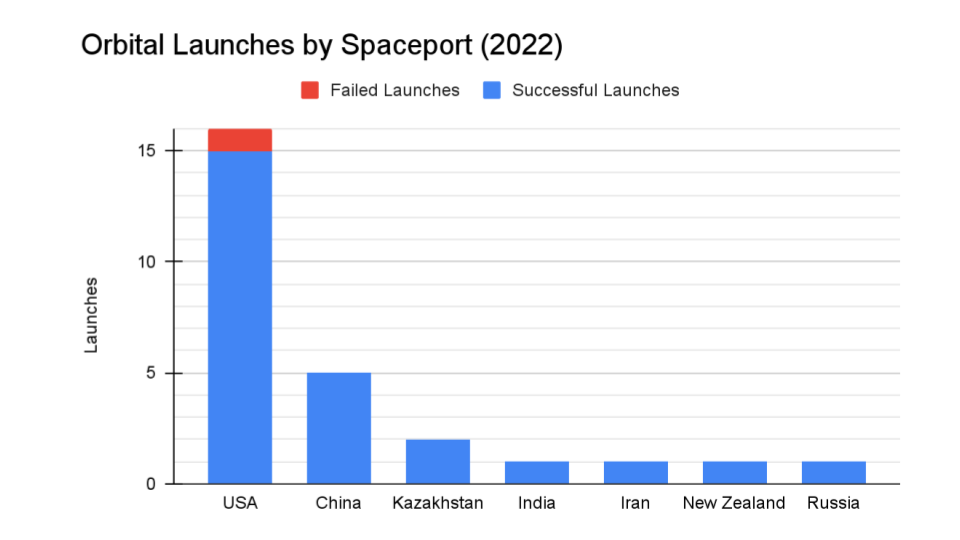
We keep track of orbital launches by launch site, also called spaceport. Here’s that breakdown:
USA 16
China 5
Kazakhstan 2
India 1
Iran 1
New Zealand 1
Russia 1
From those 27 launches, a total of 531 spacecraft were put into orbit.
Your random space fact for this week is that two RS-25 engines on the upcoming Artemis 1 SLS launch flew together on three missions: STS-127,131, and 135.
This has been the Daily Space.
You can find more information on all our stories, including images, at DailySpace.org. As always, we’re here thanks to the donations of people like you. If you like our content, please consider joining our Patreon at Patreon.com/CosmoQuestX.
Credits
Written by Pamela Gay, Beth Johnson, and Erik Madaus
Hosted by Pamela Gay, Beth Johnson, and Erik Madaus
Audio and Video Editing by Ally Pelphrey
Content Editing by Beth Johnson
Intro and Outro music by Kevin MacLeod, https://incompetech.com/music/


 We record most shows live, on Twitch. Follow us today to get alerts when we go live.
We record most shows live, on Twitch. Follow us today to get alerts when we go live.